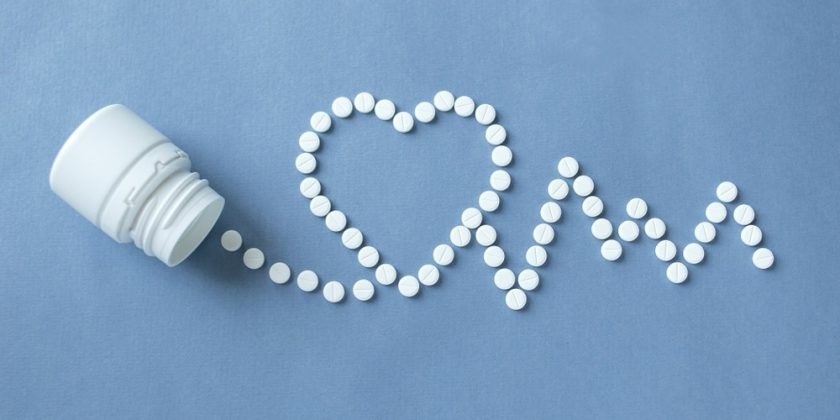Clinical trial reveals dapagliflozin's impact on heart failure and type 2 diabetes management

In a recent study published in eClinicalMedicine, a group of researchers conducted a clinical trial on the effects of dapagliflozin on the urinary albumin-to-creatinine ratio (UACR) in patients with heart failure (HF) and type 2 diabetes mellitus (T2D).

Background
Sodium-glucose cotransporter 2 (SGLT2) inhibitors, initially developed for T2D, have shown benefits in reducing death and other adverse outcomes in HF patients, with or without T2D.
They have also improved renal outcomes in chronic kidney disease (CKD), even at reduced glomerular filtration rates (GFR). Earlier trials like Canagliflozin and Renal Events in Diabetes with Established Nephropathy Clinical Evaluation (CREDENCE) and Dapagliflozin and Prevention of Adverse Outcomes in CKD (DAPA-CKD) demonstrated SGLT2 inhibitors' effectiveness in reducing UACR, a key marker in CKD and HF.
However, their impact specifically in HF and T2D patients remains less explored, necessitating further research like the Dapagliflozin for the Attenuation of Albuminuria in Patients with Heart Failure and Type 2 Diabetes (DAPPER) study to fill this evidence gap.
About the study
This multicentre, randomized, standard treatment-controlled trial was conducted at 18 medical facilities in Japan from May 2017 to March 2022. The study, sponsored by AstraZeneca and Ono Pharmaceutical Companies until August 2021 and then supported by another entity until its conclusion was overseen by a Protocol Steering Committee and evaluated for safety and event occurrence by independent committees. Statistical analyses were carried out by the National Cardiovascular Centre's Data Science Department.
Eligible patients were those aged 20 to 85 years with HF and T2D, having specific criteria related to cardiac function, biomarker levels, and history of HF treatment, with an estimated GFR (eGFR) of at least ≥45 mL/min/1.73 m2. Exclusion criteria included insulin treatment, hypersensitivity to investigational drugs, serious liver diseases, and several other health conditions. The study did not set specific entry or exclusion criteria based on UACR values.
Baseline, eight-week, and 96-week UACR were measured by a standard procedure involving central processing of all samples. Randomization was made possible through an internet-based system that allocated the participants to either the control group with diabetes medicine, not SGLT2 inhibitor, or the dapagliflozin group. Owing to the open-label design of this study, blinding for primary outcomes was not possible, but the blind committee performed assessments of secondary outcomes.
Relevant committees approved the ethics of the study, which was conducted according to the Declaration of Helsinki and Clinical Trials Act. Statistically, changes in UACR and other continuous variables were analyzed using the student t-test and analysis of covariance. Time-to-event data were analyzed using the Kaplan–Meier estimator and Cox proportional hazards model, with R version 4.2.0 used for all statistical analyses.
Study results
In the present study, 144 patients were assigned to the dapagliflozin group and 141 to the control group. There was, however, no significant difference in demographic and baseline clinical characteristics between the two groups. Most of the cases included males at an average of about 72 years old. Many of them already have been suffering from hypertension and have been taking different cardiovascular drugs and anti-diabetic medications previously.
From the two-year follow-up, the primary outcome, the change in the UACR, did not differ significantly between the dapagliflozin arm and the control group. The difference in median change in UACR between the two groups was -13.0 mg/g Cr, having no statistical significance (3.7 mg/g Cr for dapagliflozin vs 6.9 mg/g Cr control). Both groups also exhibited similar results in log-transformed values of UACR changes.
In terms of secondary outcomes, no significant shifts were observed in UACR categories or eGFR categories between the two groups. However, there were differences in several cardiovascular outcomes. The dapagliflozin group showed lower rates of hospitalization for cardiovascular events and heart failure, as well as a decreased need for additional prescriptions for heart failure compared to the control group. The hazard ratios for these events were significantly lower in the dapagliflozin group, indicating a reduced risk of these events.
Adverse events were reported in both groups, with the dapagliflozin group experiencing 158 events and the control group 171. Serious adverse events were lower in the dapagliflozin group (17.8%) compared to the control group (29.0%). There were no cases of diabetic ketoacidosis or hyperosmolar hyperglycemic syndrome in either group. Drug-related serious adverse events were slightly more common in the dapagliflozin group, but fractures and amputations were similarly rare in both groups.
Conclusion
Overall, while the study did not find a significant difference in the primary outcome of UACR change, it did observe the beneficial effects of dapagliflozin on several secondary cardiovascular outcomes, suggesting its potential utility in reducing cardiovascular risks in patients with HF and T2D.
- Fumiki Yoshihara, Miki Imazu, Ichiro Sakuma, et al. Dapagliflozin for the attenuation of albuminuria in Patients with heart failure and type 2 diabetes (DAPPER study): A multicentre randomised open-label parallel-group standard treatment-controlled trial. eClinicalMedicine, 2023. doi: https://doi.org/10.1016/j.eclinm.2023.102334
https://www.thelancet.com/journals/eclinm/article/PIIS2589-5370(23)00511-4/fulltext
Posted in: Drug Trial News | Medical Science News | Medical Research News | Medical Condition News | Disease/Infection News
Tags: Albumin, Albuminuria, Amputations, Biomarker, Chronic, Chronic Kidney Disease, Clinical Trial, Creatinine, Diabetes, Diabetes Mellitus, Diabetic Ketoacidosis, Drugs, Glucose, Heart, Heart Failure, Hypersensitivity, Insulin, Kidney, Kidney Disease, Liver, Medicine, Nephropathy, Research, Syndrome, Type 2 Diabetes

Written by
Vijay Kumar Malesu
Vijay holds a Ph.D. in Biotechnology and possesses a deep passion for microbiology. His academic journey has allowed him to delve deeper into understanding the intricate world of microorganisms. Through his research and studies, he has gained expertise in various aspects of microbiology, which includes microbial genetics, microbial physiology, and microbial ecology. Vijay has six years of scientific research experience at renowned research institutes such as the Indian Council for Agricultural Research and KIIT University. He has worked on diverse projects in microbiology, biopolymers, and drug delivery. His contributions to these areas have provided him with a comprehensive understanding of the subject matter and the ability to tackle complex research challenges.